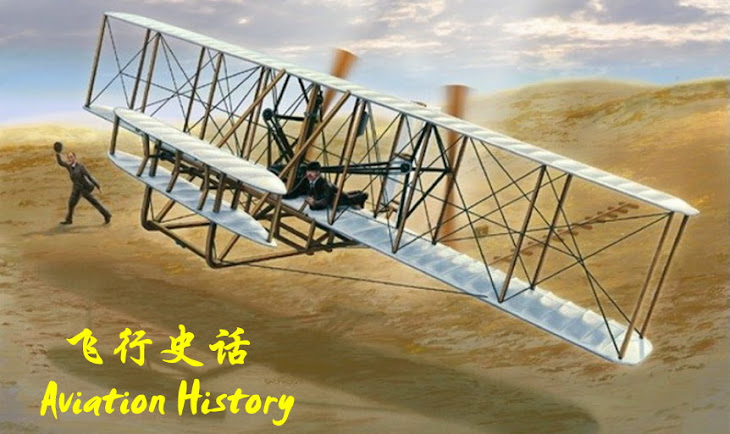January
January 1 Konstantin Tsiolkovski deduces the Basic Rocket Equation in his article Explorations of outer space with the help of reaction apparatuses.
February
February 16 Traian Vuia presented to the Académie des Sciences of Paris the possibility of flying with a heavier-than-air mechanical machine and his procedure for taking off, but it was rejected for being an utopia, adding the comments: The problem of flight with a machine which weighs more than air can not be solved and it is only a dream.
March
March 31 - Richard Pearse is reputed to have made a powered flight in a heavier-than-air craft, a monoplane of his own construction, that crash lands on a hedge. This date is computed from circumstantial evidence of eyewitnesses as the flight was not well-documented at the time. The machine made a flight claimed to be around 150 feet (45 m) on his farm at Upper Waitohi, near Timaru in south Canterbury, New Zealand.
May
May 11 - Richard Pearse is claimed to have made a flight of around 1,000 yards (900 m), landing in the semi-dry bed of the Opihi River.
August
August 18 - Karl Jatho makes a flight with his motored aircraft in front of four people. [1]. His craft flies up to 200 feet (60 m) a few feet above the ground in a powered heavier-than-air craft.
October
October 7 - Samuel Langley conducts the first tests of his full-sized man carrying version of his earlier model aerodromes. The pilot Charles Manly nearly drowned when the machine slid off its launch aparatus atop a houseboat and fell into the Potomac River.
November
November 12 - The Lebaudy brothers make a controlled dirigible flight of 54 km (34 miles) from Moisson to Paris, France.
November 19 Léon Y. K. Levavasseur demonstrates his Antoinette engine, designed as a lightweight powerplant specifically for aircraft.
December
December 8 - second attempt by Charles Manly to fly Langley's repaired full-sized aerodrome. As with the October 7 attempt the machine failed to fly tripping on its launch gear and somersaulting into the Potomac River nearly killing Manly. A surviving photograph captures the machine upended on its side as it falls off the houseboat. Langley himself was absent at this attempt but the machine's failure to fly ended his government(aka U.S. Army) funded attempts at building a successful full sized man-carrying flying machine.
December 17 - The Wright Brothers make four flights in their Flyer at Kitty Hawk, North Carolina following years of research and development. Orville Wright takes off first and flies 120 ft (37 m)in 12 seconds. This is frequently considered the first controlled, powered heavier-than-air flight and is the first such flight photographed. On the fourth effort, Wilbur flies 852 ft (260 m) in 59 seconds.
我的简介

- 刘教练
- 1968年开始参加童军活动。 目前担任吉隆坡坤成童军团总团长兼坤成小学一校童军团教练。 1996年创立全国第一团稚龄童军(Pre-Cubs),并于2002年成立华校第一团航空童军(Air Scout}。 兴趣是摄影、阅读及军事模型制作。
博客归档
-
▼
2009
(264)
-
▼
四月
(111)
- Attempts at Flight 1595-1781
- 2010 in aviation
- 2009 in aviation
- 2008 in aviation
- 2007 in aviation
- 2006 in aviation
- 2005 in aviation
- 2004 in aviation
- 2003 in aviation
- 2002 in aviation
- 2001 in aviation
- 2000 in aviation
- 1999 in aviation
- 1998 in aviation
- 1997 in aviation
- 1996 in aviation
- 1995 in aviation
- 1994 in aviation
- 1993 in aviation
- 1992 in aviation
- 1991 in aviation
- 1990 in aviation
- 1989 in aviation
- 1988 in aviation
- 1987 in aviation
- 1986 in aviation
- 1985 in aviation
- 1984 in aviation
- 1983 in aviation
- 1982 in aviation
- 1981 in aviation
- 1980 in aviation
- 1979 in aviation
- 1978 in aviation
- 1977 in aviation
- 1976 in aviation
- 1975 in aviation
- 1974 in aviation
- 1973 in aviation
- 1972 in aviation
- 1971 in aviation
- 1970 in aviation
- 1969 in aviation
- 1968 in aviation
- 1967 in aviation
- 1966 in aviation
- 1965 in aviation
- 1964 in aviation
- 1963 in aviation
- 1962 in aviation
- 1961 in aviation
- 1960 in aviation
- 1959 in aviation
- 1958 in aviation
- 1957 in aviation
- 1956 in aviation
- 1955 in aviation
- 1954 in aviation
- 1953 in aviation
- 1952 in aviation
- 1951 in aviation
- 1950 in aviation
- 1949 in aviation
- 1948 in aviation
- 1947 in aviation
- 1946 in aviation
- 1945 in aviation
- 1944 in aviation
- 1943 in aviation
- 1942 in aviation
- 1941 in aviation
- 1940 in aviation
- 1939 in aviation
- 1938 in aviation
- 1937 in aviation
- 1936 in aviation
- 1935 in aviation
- 1934 in aviation
- 1933 in aviation
- 1932 in aviation
- 1931 in aviation
- 1930 in aviation
- 1929 in aviation
- 1928 in aviation
- 1927 in aviation
- 1926 in aviation
- 1925 in aviation
- 1924 in aviation
- 1923 in aviation
- 1922 in aviation
- 1921 in aviation
- 1920 in aviation
- 1919 in aviation
- 1918 in aviation
- 1917 in aviation
- 1916 in aviation
- 1915 in aviation
- 1914 in aviation
- 1913 in aviation
- 1912 in aviation
-
▼
四月
(111)
